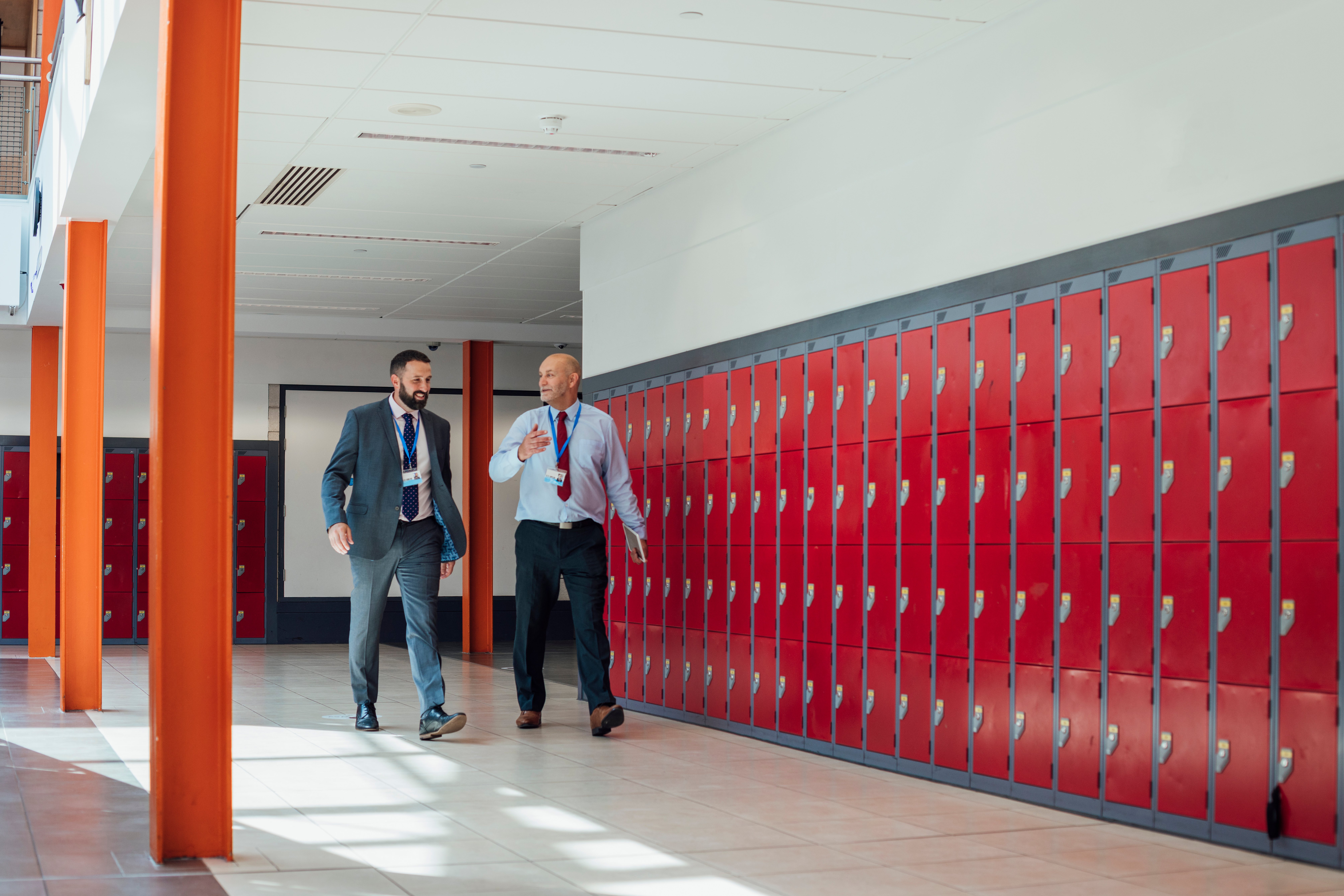When a student starts missing school, early communication can make all the difference. A well-timed attendance nudge letter—written with empathy and action-oriented support—can help families re-engage before absenteeism becomes a chronic issue.
But writing strong letters at scale? That’s easier said than done.
AI is beginning to change that. With tools like ChatGPT, educators can quickly draft attendance letters tailored to specific situations. And for many schools, it’s a great way to start building capacity.
But when your team needs letters that are personalized, data-informed, and aligned with district messaging, general-purpose tools like ChatGPT fall short.
In this post, we’ll show you how to create an attendance nudge letter using both a general AI tool and Panorama Solara, our secure, district-wide AI platform. You’ll see how each approach works, and why Solara gives your team a faster, safer way to connect with families in a meaningful way.
Why Use AI for Attendance Letters?
When it comes to reducing absenteeism, communication matters. But many districts face common challenges:
-
Letters take too long to personalize
-
Language and tone can feel punitive or unclear
-
There’s little consistency across schools
-
Manual processes leave room for error
AI can help by:
-
Drafting letters tailored to each student’s situation
-
Suggesting clear, supportive language
-
Reducing the time and effort to communicate proactively
-
Promoting consistency across schools and teams
The key is choosing an AI solution that’s safe, integrated with your district data, and aligned with your family engagement strategy.
Searching for the right AI solution for your district? Our AI Buyer's Guide can help you evaluate AI vendors, ask the right questions, and make informed purchasing decisions.
How to Create an Attendance Nudge Letter with AI
Here’s a look at the steps involved—first using a general-purpose AI tool like ChatGPT, then with Panorama Solara’s Nudge Letter Generator, a purpose-built workflow for educator communication.
Step-by-Step Nudge Letter Writing with AI
You don’t need a premium tool to get started with AI. Even a free assistant like ChatGPT can help educators save time on nudge letters. Below, we walk through the process using ChatGPT—and show how Solara makes each step more powerful by connecting directly to your district’s data and MTSS systems.
1. Gather Student and Contact Info
With ChatGPT:
You’ll need to summarize the student’s attendance issue in broad, anonymized terms (e.g., “a student who has missed 8 days this month”) and provide that input to ChatGPT. Once you’ve generated the output, you’ll then manually add any identifying details (such as the student’s name or mailing address) before sending it.
Because ChatGPT is not FERPA-compliant, you cannot include any personally identifiable information, meaning the letter must stay generic.
With Solara:
Solara includes pre-built tools that help educators support students more effectively—like the Nudge Letter Generator, which makes outreach fast and standardized. In the Nudge Letter Generator, you:
-
Select the student
-
Add any relevant information
-
Add the name and role of a school contact person (e.g., counselor, attendance coordinator)
Did you know? With built-in security protections in place, you can trust that your district’s information is safe and never used to train AI models. Panorama fully complies with SOC 2, FERPA, and COPPA, and is 1EdTech certified.
2. Add Details About Attendance or Engagement Challenges
With ChatGPT:
You’ll have to describe the student’s attendance pattern and root causes in your prompt (without naming the student). For example:
“Write a letter to a caregiver whose child has missed 20% of school due to transportation issues. Keep the tone supportive and include action steps.”
The draft will be general and may not match your district’s tone, frameworks, or preferred communication style. You’ll likely need to revise it significantly.
With Solara:
Solara already has access to student attendance, grades, behavior, and survey data. You can then add just a few short notes to provide extra context—such as barriers (e.g., transportation, health, engagement) or patterns the team has noticed.
Solara combines this input with the existing student data, along with your district’s communication preferences and an evidence-based engagement framework, to create a clear, empathetic message. The result: generating a draft is quick and easy.
3. Generate a Personalized, Family-Friendly Letter
With ChatGPT:
You’ll receive a general draft that might include helpful ideas. However, the letter won’t include student-specific information, may lack clear next steps, and will need manual editing to meet district guidelines. You'll also need to format, send, and track the communication separately.
With Solara:
Solara instantly generates a personalized, family-friendly nudge letter that reflects your district’s preferred tone and format. The letter:
-
Uses plain, supportive language
-
Clearly outlines the attendance concern
-
Offers next steps or school supports
-
Could include a trusted school contact for follow-up
A sample Solara-generate nudge letter (demo data & names used):
|
Dear Parent/Guardian of Alice O'Brien, I hope this letter finds you and your family well. I'm reaching out because we care deeply about Alice's success at Bayside Elementary School and want to ensure she has every opportunity to thrive academically and socially. I wanted to share some information about Alice's attendance this school year. Out of 115 total school days so far, Alice has attended 111 days and has been absent 4 days, giving her an attendance rate of approximately 96.5%. While this is quite good overall, we know that every day of learning matters, especially in these important early elementary years when foundational skills are being built. Regular attendance helps students like Alice stay connected with classroom routines, build strong relationships with peers and teachers, and maintain momentum in their learning. When students miss school, they can feel disconnected from classroom discussions and activities that build upon each other daily. We're here to support you and Alice in maintaining excellent attendance. Our school offers resources such as flexible communication with teachers about makeup work and support from our guidance counselor if there are any challenges affecting school attendance. One simple step you can take is establishing a consistent bedtime and morning routine that helps Alice feel prepared and excited about coming to school each day. Please don't hesitate to reach out if you'd like to discuss Alice's attendance or if there's anything we can do to support your family. You can contact me at lbrown@panoramaschools.edu. We believe in Alice's potential and look forward to working together to ensure her continued success! Warm regards, |
It’s everything you’d want in a nudge letter—without the time burden on your team.
Building Stronger Attendance Together
Early, empathetic communication helps create partnerships between families and schools when solving attendance challenges—not targets of blame. AI can help schools make that outreach faster and more consistent.
General-purpose AI tools like ChatGPT are a good starting point, especially for brainstorming. But they can’t securely access student context, align with district messaging, or scale across teams.
Panorama Solara was built for this. Its Nudge Letter Generator gives educators a simple way to create meaningful, actionable letters—without the extra lift. Each message is personalized and grounded in real student data, ensuring communication that is both empathetic and effective.
Schedule a demo today to discover how AI-powered workflows can help your district send the right message—faster, safer, and at scale.
Not ready for a district-wide AI solution just yet? No problem. Check out our Free AI Roadmap for District Leaders. It’s packed with tools to help you lead with confidence, including:
-
100+ AI prompts for educators and support staff
-
An AI buyer’s guide to help you evaluate platforms
-
Practical planning tools to set your vision and build momentum
Whether you're ready to implement or just starting to explore, we're here to help you unlock the promise of AI in education.



.jpg)



